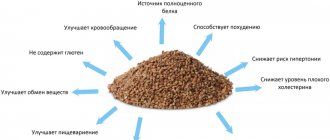Recipe
September 2, 2020 44
0
Many candy recipes came to us from the East. Candied fruits are still eaten with great pleasure in eastern countries. To make homemade sweets, dried fruits, chocolate, nuts and various healthy spices are used.
The word “candy” comes from the Latin confectum, which means “to make,” and was coined by medieval pharmacists. This is what they called the candied fruits that were sold in the pharmacy.
Children can eat homemade candies. They are quite high in calories and you need to adhere to a reasonable amount. We will tell you how to make candy at home. The simplest candies with simple ingredients. The recipe for Raffaello sweets will not leave even adults indifferent.
The benefits of chewing gum and its harm
Chewing gum (or simply chewing gum) is not intended for a person to experience any unusual sweet or menthol taste. The purpose of chewing gum is to help a person maintain oral hygiene.
Chewing gum is not a candy or a refreshing lollipop. This is a purely dental subject, and not a pleasure, as is usually shown in advertising.
In the process of chewing gum in the human oral cavity, acids resulting from the activity of oral bacteria are neutralized. These acids are actively involved in the formation of dental plaque. Thus, chewing gum is an obstacle to the formation of harmful deposits on the tooth surface.
Another benefit of chewing gum is making your breath fresher. Chewing gum with a menthol, mint flavor copes with this task perfectly.
This is why advertising so often tells us that chewing gum should be consumed after meals. However, not at the same moment. It is better to wait at least ten minutes after eating, and only then chew gum.
The “out of the frying pan and into the fire” method (in other words, a sudden change in environment) may not bring you the effect you expect from chewing gum.
Chewing gum only makes sense within an hour to an hour and a half after eating. It is at this time that the stomach needs gastric juice to digest lunch or dinner, and the process of chewing gum helps produce it. If you need to freshen your breath, it is better to use mouth rinses or sugar-free mints.
Chewing gum composition
The most important requirement for the composition of chewing gum is that it contains no sugar. Think about the benefits of chewing gum containing sugar? Sugar is an active destroyer of tooth enamel. Sugar is an active catalyst for the formation of carious lesions in the tooth cavity, or simply caries.
In the process of chewing gum, sugar, if contained in the composition, is broken down into acids, forming a hard plaque on the tooth surface. Such plaque is not removed by salivary fluid, but over time collects all harmful organisms. After some time, plaques and holes begin to form on this film, covered with microbes - the beginnings of future caries.
Therefore, chewing gum should not contain sugar.
It’s good if the chewing gum contains xylitol instead of sugar. This substance is a sugar substitute, but safe for the tooth surface. It has an anti-caries effect.
It is important that the chewing gum contains another component - beckons. It activates the salivary glands and increases secretion. Saliva helps normalize the balance of the environment in the oral cavity, neutralizing the destructive effects of acids. Remember that after eating, the environment in the oral cavity is always saturated with acids.
It is desirable that the chewing gum does not contain dyes, but is of a natural, white color. The dyes in chewing gum are an extra element that only adds unnecessary stress to tooth enamel.
The new inventions of chewing gum sellers may not be entirely useful either.
Innovations such as gum with exotic flavors, sweet fillings and granules are best set aside in favor of regular gum with a refreshing, minty taste.
The benefits of chewing gum
Now let's turn directly to the benefits of chewing gum, its obvious advantages. Then we will look at the disadvantages - significant disadvantages.
Intense salivation
As soon as we start chewing gum, active secretion of salivary secretion occurs in our oral cavity. The secretion of saliva normalizes the acid-base balance (saliva contains an alkali that has a “balanced” effect on the acid) and has a beneficial effect on the oral environment. Saliva also additionally “washes” the tooth surface from harmful deposits.
Salivation also normalizes the digestion process. When chewing gum, gastric juice is released, which helps with overeating and indigestion.
Cleansing
Chewing gum really cleanses the mouth of food deposits. But - only superficially. In the case of hard-to-reach places in the oral cavity, the elastic band remains powerless.
Chewing gum is just an additional tool in the process of caring for the oral cavity. If you need to clean your teeth from food deposits, use thin and safe dental floss.
Chewing mechanism
It has been proven that the mechanism of chewing gum has a beneficial effect not only on the oral cavity, but also on the condition of the body as a whole.
Firstly, while chewing gum, both the upper and lower jaws are strengthened, as well as the blood circulation in the gum tissues is normalized.
Secondly, chewing gum helps to cope with the effect of blocked ears (when traveling on an airplane or high-speed train).
When chewing gum, you do not need to open your mouth wide or make sudden movements to prevent the gum from getting into your throat. There is also no need to blow bubbles - this favorite entertainment for many does not carry any positive load.
Psychological effect
Neurologists have discovered another amazing effect of chewing gum - this process allows many people to cope with obsessive, difficult thoughts.
Chewing gum when emotionally excited helps to calm down and prevent a stressful situation.
This is similar to the psychological effects of smoking cigarettes and eating large amounts of chocolate, but chewing gum is undoubtedly the safest way to cope with stress.
Since the jaw muscles actively work while chewing gum, the process itself helps a person not only calm down, but also concentrate and gather strength.
Chewing gum harm
Now let's talk about the disadvantages that await a person who is accustomed to chewing tasty gum after every meal.
You need to know when to stop. When using chewing gum to cleanse the oral cavity of microorganisms, it is necessary to observe moderation. Chewing gum is enough to chew for five to ten minutes to carry out superficial cleaning of the oral cavity and activate the secretion of salivary secretions.
If you neglect this rule and chew gum frequently, you may encounter the following problems:
- dysfunction of the stomach and duodenum due to excessive formation of gastric juice;
- weakening of the dental periodontium, because teeth are not designed for continuous chewing;
- disturbances in the functioning of the temporomandibular joint, headaches;
- abrasion of tooth enamel, change in its color;
- formation of gastritis and ulcers;
- increased degree of dryness of the oral mucosa.
Education of addiction
If a person chews gum every time a stressful situation arises, he will get used to this state of affairs. In any situation, even the simplest one, he will resort to chewing gum.
Poisonous effect
Chewing gum many times a day for long periods of time can make a person feel nauseous. If you chew gum for a long time, then food debris that the gum “collects” can get into the stomach, which is also very unpleasant.
Harm to the mouth
Chewing gum too often on one side of the jaw (right or left) leads to external asymmetry of the face. The reason for this is an increase in muscles on only one side of the jaw. Excessive activity on one side of the mouth compared to the other can lead to the development of oral diseases.
Harm to children
The use of chewing gum in childhood and even adolescence is fraught with disruptions and complications in the development of teeth. Chewing gum, especially when blowing bubbles, significantly spoils the bite and contributes to the incorrect positioning of teeth.
Harmful components
If chewing gum contains harmful components, then the negative effect of its use increases significantly.
Sugar in chewing gum promotes the formation of caries. Dyes, flavor stabilizers, some emulsifiers and antioxidants harm the human liver and cause intestinal problems.
Phenylalanine, found in some chewing gums, harms the functioning of the nervous system. Some sugar substitutes can negatively affect the functioning of blood vessels and the digestion process.
These include sorbitol, aspartame, acesulfame.
So, after familiarizing yourself with all the pros and cons of chewing gum, you can make the right decision - how often you can use it. Chewing gum is just a pleasant addition to a whole range of measures that must be taken daily to keep your smile beautiful and your teeth healthy.
Source: https://smile4you.ru/blog/kak-sohranit-zuby/polza-zhevatelnoj-rezinki-i-ee-vred/











